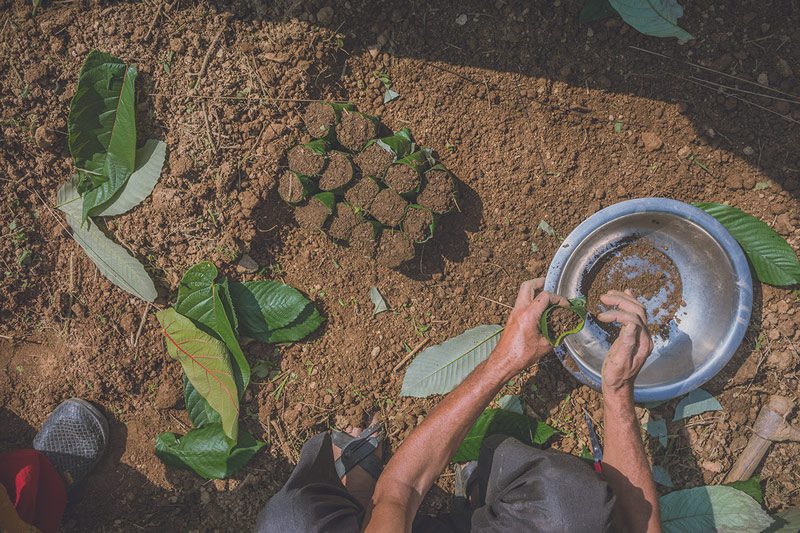Agriculture

Fuyang, a district in Hangzhou, China, covers an area of 1,831 square kilometres, with a population of 660,000. The mountainous landforms are featured with insufficient congenital farmland, and the available land resources are relatively limited.

Farmers in many regions of Nepal and other parts of the Hindu Kush Himalaya have, over time, had to rely on monocultures of hybrid crop varieties.

Urban areas – such as Kathmandu – do not have arable land and are dependent on farms elsewhere that use large amounts of water, pesticides, and chemical fertilizers in growing crops.

Meghalaya, a state in north-eastern India, has the most agricultural fields across steep hill slopes, which makes groundwater channelling for irrigation impractical.

Plastic pollution in farms can be reduced at the source by promoting leaf bags to grow vegetable seedlings. These leaf bags are made from locally available tree leaves and are relatively easy to prepare.

Organic agriculture combines tradition, innovation, and science, benefitting both the community and the environment. There is great potential for organic agriculture in the Hindu Kush Himalaya (HKH) countries.

Himalayan nettle (Girardinia diversifolia) is a plant that grows abundantly without cultivation in the hilly and mountainous regions of Nepal as well as India, China, Bhutan. It holds great cultural and economic significance to the mountain communities in the region.

Large cardamom (Amomum subulatum) is a high value cash crop and a major source of cash income for farmers in the eastern Himalayan region, including eastern Nepal; Sikkim and parts of Darjeeling and Kalimpong districts in West Bengal, India; and Southern Bhutan.

Bees are the most effective pollinators of agriculture and horticulture crops. Animal pollinators, such as bees, are irreplaceable key agents in the reproduction chain for over 80% of the world’s plant species and three-quarters of food crops.
Contents
The stories of this solutions portal are placed around six thematic areas as follows